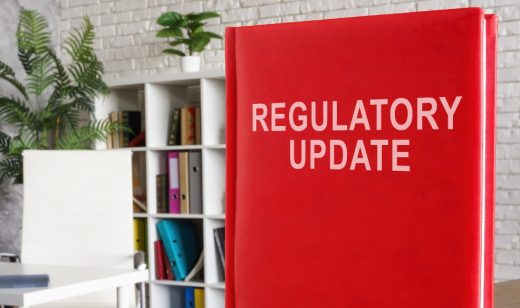Risk Management Programs

Compliance with the EPA’s Risk Management Program (RMP) rule is mandatory for facilities handling specific quantities of hazardous substances. The rule requires hazard assessments, prevention programs, and emergency response planning, including coordination with local responders, to mitigate risks. The RMP’s significance lies in the requirement to review off-site impacts in order to safeguard the public and the environment. In this way, this program mirrors OSHA’s Process Safety Management (PSM) standard while extending its focus to public and environmental protection, with additional requirements such as impact distance determination and alternative release scenario analysis. These evaluations are not only mandated by regulatory bodies like the EPA but are also considered good engineering practice for the process industries worldwide. Given its performance-based nature, companies often seek external expertise to navigate the technical complexities of RMP development and maintenance, including the submission of a Risk Management Plan.

Recent Updates to the EPA RMP Regulations
The EPA’s RMP regulations underwent significant changes with the publication of the “Safer Communities by Chemical Accident Prevention” SCCAP) rule on March 11, 2024.
Key provisions of the revised rule include Safer Technologies and Alternatives Analysis (STAA), updated facility siting requirements, root cause analysis (RCA) for incidents, expanded employee participation actions, enhanced emergency response program and exercise requirements, compliance audits, and third-party compliance audits. The rule emphasizes adherence to Recognized and Generally Accepted Good Engineering Practices (RAGAGEP) and mandates the availability of chemical hazard information to the public. Compliance timelines are established for covered processes and RMP-regulated facilities to adhere to the new requirements, with staggered deadlines up to May 10, 2028, for additional information inclusion in the RMP as applicable.
AcuTech Capabilities
Leveraging our decades of expertise, we guide companies in developing, updating, and submitting risk management plans, conducting compliance audits, and implementing effective process safety management programs. As a trusted partner, we navigate the complexities of RMP regulations, assisting organizations in enhancing their process risk management programs while ensuring regulatory compliance.
Risk Management Program Development
AcuTech has supported numerous clients in the development and implementation of Risk Management Programs, including submission of the Risk Management Plan to the EPA. Program development includes the prevention program, hazard assessment, and risk management plan preparation.
Third Party Audits
Third-part audits will now be mandatory for facilities meeting certain criteria outlined in the updated RMP rule. AcuTech conducts PSM-RMP audits utilizing our compliance version of the AcuTech PSM/RMP audit protocol, which may be used alongside proprietary protocols or as a standalone framework. Our protocol is adapted from the version outlined in CCPS Guidelines for Auditing Process Safety Management Systems, 2nd Ed., ensuring thoroughness and alignment with industry best practices.
Offsite Consequence Analysis
A major portion of the RMP Plan is the Offsite Consequence Analysis (OCA). The Compliance Guidelines for EPA’s RMP Rule clearly state the requirements for an OCA and AcuTech works with each client to cover the required elements.
AcuTech works with clients to follow the requirements for worst-case release scenarios and their submissions in line with requirements stated in §68.25(a)(2)(iii). Our reports include maps indicating distances to endpoints for regulated substances and the locations of public and environmental receptors. These maps are not required but are valuable in communicating risks to the public.
Worst Case and Alternative Release Scenarios & Demographic Analysis
The purpose of the Demographic Analysis is to identify public and environmental receptors that may be affected by the Worst Case and Alternative release scenarios. The RMP rule specifies the requirements for this analysis and provides definitions for use in the analysis. AcuTech consultants have performed numerous demographic analyses and have confirmed interpretations of the guidance provided to ensure we are able to give up-to-date guidance to all clients.
Determination of Five-Year Accident History & Incident Investigation
AcuTech will support the identification of any incidents involving releases of the covered chemical(s) that meet RMP criteria. This work is supported by implementation of the Incident Investigation element. AcuTech consultants are well-versed in incident investigation and the information required to meet the 5-year accident history reporting requirements.
Safer Technologies and Alternatives Analysis (STAA)
The steps to conduct a STAA study are like a traditional industry PHA; however, they differ in emphasizing reduction or elimination of the hazard itself rather than the introduction of additional safeguards. STAA studies review opportunities to implement inherently safer designs through substitution, simplification, moderation, and minimization. AcuTech is well-positioned to support these studies given our leading position in the field, having served as the authoring company of the Center for Chemical Process Safety (CCPS) book Inherently Safer Chemical Processes: A Life Cycle Approach (2nd and 3rd editions).
Emergency Response Planning
As per recent changes to the rule, AcuTech can develop and implement procedures for notifying the public and emergency response agencies about accidental releases of RMP-regulated substances. We ensure that plans include notification of offsite entities with necessary release information to aid their response efforts.

Discover our insights.
